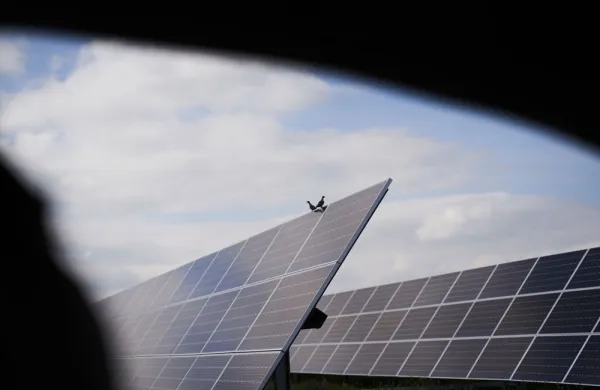For some foundations, making ESG investments isn’t enough. At least two organizations have gone a step further and set up separate pools of capital that can only be invested in accordance with their missions.
In 2021, the Robert Wood Johnson Foundation created a $200 million impact investing pool that has been actively allocating capital to projects ranging from funding for small businesses hit by Covid-19 to research on social bond issuances. RWJ’s program is reminiscent of a similarly sized impact pool set up by the McKnight Foundation in 2014. Today, 40 percent of McKnight’s $3 billion in assets are in mission-related investments.
In an environment dominated by the desire to find the right way to go about ESG investing, these foundations have taken a unique approach to doing good, linking their grant-making focus to their investment prowess.
Kimberlee Cornett joined the Robert Wood Johnson Foundation in early 2020 to lead this effort, after spending nine years at the Kresge Foundation in a similar role.
“Before I came, the board made available $200 million as an initial foray into impact investing,” Cornett said. “It's not out of the endowment — it’s a separate pool of capital on the charitable-giving side of the ledger.”
In the past year, the impact pool made a $2 million guarantee to New Jersey Community Capital, a nonprofit community development financial institution. The investment will support local businesses hurt by Covid-19, with a focus on people of color.
The team also recently announced that via a $4 million grant, the foundation is funding work to bring transparency to social municipal bond issuance. “Every pension fund has exposure,” Cornett said of social bonds. “One of the things that the market doesn’t easily make visible is who an issuance is benefiting and how that’s being repaid.”
According to Cornett, there has been a 40 percent rise in social bond issuance, and they’ve been oversubscribed five times over. “But it’s like what we saw when green bonds started coming out,” Cornett explained. “Whether it was a light green, a lime green, or a forest green, it was all just green. There was no distinction.”
Certain social bond issuances are being repaid by fines charged to lawbreakers. However, those laws are often disproportionately applied to communities of color, effectively making the social benefits of those bonds moot. Cornett said that Robert Wood Johnson has made the grant to help build a framework that will allow institutions to assess these bonds.
“One of the benefits of building a practice like this is that you do become a bridge between the other two arms of the house,” Cornett said. “Nirvana for us is finding those areas where we can activate the grant-making side, and then we may find a market-rate opportunity for investment.”
In 2014, the McKnight Foundation set aside 10 percent of its portfolio — at the time, $200 million — for an impact investing pool. The foundation hired Elizabeth McGeveran, who has since become its director of investments, to lead the effort.
By 2018, the foundation had fully committed the pool of capital — $75 million to public equities, $75 million to private investments, and $50 million to program-related investments that were considered concessionary. The program’s returns were strong, so the board decided to treat that 10 percent of its portfolio as a floor rather than a ceiling for impact-related investments.
The result? Today, 40 percent of McKnight’s endowment is mission-aligned. The fixed-income portfolio — worth $200 million — has no exposure to coal and oil sands. The fund has also invested with ESG managers and continuously monitors and makes suggestions for its existing investment managers.
“We periodically assess our existing portfolio and fund managers to understand how much ESG risk they introduce,” she said. “We look at products that we’re already in and think about ways to become more aligned.”
McKnight has also made its own direct impact investments. One example is McKnight’s investment in Arcadia, a utility company that helps both renters and homeowners in any state buy renewable power for their homes. Because the investment has a strong overlap between impact and return, McGeveran called it a “bull’s-eye” for McKnight.
“We like that it creates an option for renters, who are often excluded from renewables,” McGeveran said of Arcadia. “And in some markets, Arcadia can save you money on your utility bill, [while] in other markets it’s about the same. They’re building community solar to feed into the grid.”
Today, the endowment is continuing to look for investments like these, having benefited from the growth of that initial impact pool established in 2014.
“When we built this program, it was separate,” McGeveran said. “It was very ring-fenced off. Now, our investments are much more integrated, and the way we manage them is much more integrated. The distinction is no longer a bright line.”







